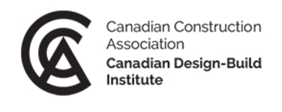
Setting Expectations for Your Commercial Renovation
Here are a few potential challenges to be aware of in order to avoid complicating your commercial renovation.
Deciding to renovate the office is not an easy decision. Your business will be interrupted, customers may complain, and the costs can rise up. However, there is nothing like a well-designed and a freshly remodeled office to bring in new clients and improve the value of your business.
The Plan Doesn’t Add Up
All Owners want to grow their business. It is important to choose a Contractor that delivers expectations and helps your build your dream office. When a Contractor is required to deliver a designer’s or other consultant’s unrealistic promises to the customer, it is hard to perform the best quality of work. Consultants usually promise the client they would have the work done without considering the quality of the project, workable time frame and real costs that can add up. Often, consultants consider their own interest to secure the project and pass inevitable problems off to the Contractor. Be aware of your consultant’s unrealistic expectations.
How to spot an unrealistic plan
Obtaining 3 – 4 estimates from equally qualified contractors is usually enough to determine the validity of the project costs and schedules and confirm the accuracy of the drawings and specs. And if 3 out of 4 contractors tell you that your shoes are untied then it’s safe to say that you better look down for yourself.
Cutting Corners with Sub-Contractors
Wanting or needing to secure the project but then realizing there are holes in the overall plan, a Contractor may think that he can cut corners by using less qualified sub-contractors. These decisions can lead to changes once the project starts, which affects the ability of the contractor to meet the schedule.
Antham’s rules for qualifying Subcontractors:
- They must have previous experience for doing similar work and provide references,
- Electrical and mechanical trades must be licensed,
- All sub-contractors must have liability insurance and WSIB coverage,
- They must be available to do the work on a consistent day to day basis in order to ensure they will complete their work in a timely manner and meet the project deadlines.
- Their pricing must be fair and competitive (or within budget) and the lowest bid is not always guaranteed to get the job.
Maintaining A Smooth Development Process
Owners and Contractors both want a smooth development process, free of endless questions and revisions. When a Contractor cannot meet the schedule, costs go up for you, as the Owner. Additionally, these delays may lead to penalties and litigation based on the documentation quality, the excessive revisions, and change orders that constitute reasonable causes. These developments can strain relations between members of the project team and negatively affect reputations.
Top tips for a smooth construction process:
The smoothness of a construction process starts at the Tender stage where the Owner must be clear about their expectations from the winning contractor and they have to be realistic expectations –
A. Timelines,
B. Quality workmanship,
C. Best prices.
Knowing one might only achieve 2 out 3, be sure to state what’s important to you upfront.
Further to this, the project Owners must always provide the tendering Contractors enough time to do their due diligence before they respond with their estimates. 5 days for simple projects, 7 – 14 days for larger, complicated projects should suffice. Otherwise things will most likely be missed and this could lead to expensive extras later.
Quick Tips:
- Make sure ALL instructions must be in writing.
- Written communication will always take precedence over verbal discussions and instructions.
- Emails should be short and to the point, otherwise the message will be lost in long winded stories.
- Short emails sent often are better than long winded emails sent infrequently.
- Pictures sent by email are always encouraged anytime,
Product Substitutions Can Be Hazardous
Things come up. If the margins are tight, the contractor does not have any flexibility to make on-the-spot decisions. The ability to make judgment calls are not only critical but allow the flexibility that can save future repair bills. The contractor knows there is a mountain of documentation needed to make a change order. Often during projects, contractor needs to propose substitutions to meet performance requirements. The Contractor and the Owner understand this impacts the construction schedule.
Best Practices for Product Substitutions
It’s not unusual for designers to specify certain ‘favorite’ products & materials because A) they know the product from previous experience or B) the manufactures provide them certain incentives for pushing their products.
It’s also not unusual for contractors to suggest alternative products to what has been specified by the design team because of back orders beyond their control or in order meet budgets or deadlines.
Neither scenario is better or worse. What matters is that the process is which alternative product or material should be considered.
The suggested alternative must be;
- Submitted in writing stating why the suggestion is being made,
- Accompanied by the proper manufactures specifications explaining the performance facts,
- Presented early enough in the process to give the Owner or his design Team time to assess the suggestion.
Quick tip for last-minute alternatives: always insist on name brands and be sure of the warranty coverage.
The Close-Out Takeover Process May Take Forever
The most difficult phase of construction is the close-out takeover period. When using a consultant, the consultant must ensure there are sufficient funds left in the contract to complete the work. Contractors who are pressured to meet deadlines may cut corners leading to deficiencies and incomplete work. While difficult to quantify, the compounded effects of unrealistic budgets and schedules on consultant and contractor performance are most assuredly negative.
How to make the close-out takeover process easier:
The closing of every project must begin well in advance, usually starts in the final weeks of the project.
- Contractor/Builder must schedule Building Permit final Inspections and provide written confirmation of Permit Close Out
- Pre- Delivery Inspection must take place prior to furniture and equipment delivery.
- Contractor must provide a proposed schedule for completion of deficient items.
- Contractor/Builder must demonstrate to the Owner (and staff) the Operation of Systems including the heating, air condition, water solenoids and filter maintenance.
- Contractor/Builder must provide an updated Project Contacts list.
- Designers must issue final report letter for permit close out.
- All mechanical trades must provide final inspection reports and close docs.
- Contractors must provide post construction maintenance instructions for the new products and fixtures.
- Contractor/Builder must Statutory Declaration for final payment.
- Provide a CD of Project Pictures – before during and after.
One Surefire Way to Have a Successful Commercial Renovation
Antham Construction Group understands how construction projects impact your business operations. We provide full construction services that deliver peace of mind for clients throughout the entire construction project, so there is no need of a middle-man. Contact us for a free consultation.
Recent Posts

Want to Reduce Noise in the Office? Improve Your Acoustics

6 Of The Most Common Office Design Mistakes You’ll Want To Avoid

The Benefits and Drawbacks of Open Ceilings

3 MORE Upcoming Interior Design Concepts for the Office Space

Tips From a Commercial Contractor: The 5 Most Common Complaints About Office Design








